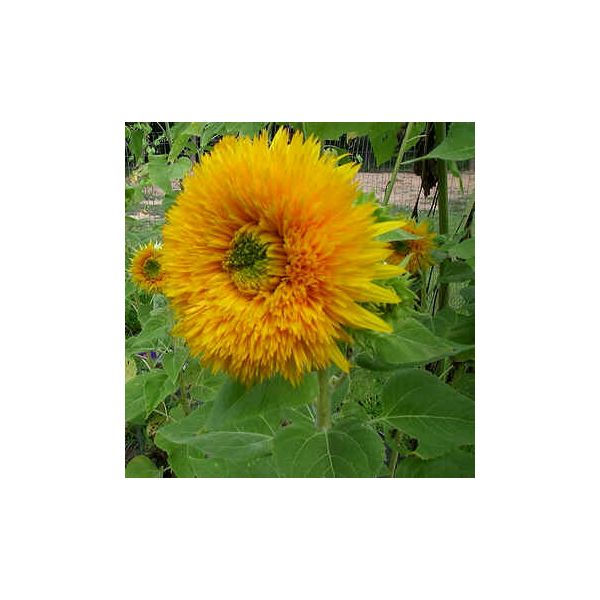Helianthus Giant Double Sungold Seeds (Sunflower Seeds)
Helianthus Giant Double Sungold Seeds (Sunflower Seeds)
A larger and taller version of Teddy Bear sunflower!

Delivery
All orders shipped with UPS Express.
Always free shipping for orders over US $250.
All orders are shipped with a UPS tracking number.
Returns
Items returned within 14 days of their original shipment date in same as new condition will be eligible for a full refund or store credit.
Refunds will be charged back to the original form of payment used for purchase.
Customer is responsible for shipping charges when making returns and shipping/handling fees of original purchase is non-refundable.
All sale items are final purchases.
Help
Give us a shout if you have any other questions and/or concerns.
Email: contact@domain.com
Phone: +1 (23) 456 789
Availability: In stock
SKU
Helianthus Giant Double Sungold
The very impressive Giant Double Sungold Sunflower are a wonderful choice as a background for other sunflower varieties, or as a screen to create your own private garden, or you can grow them as showy specimen plants.
A larger and taller version of Teddy Bear sunflower! Giant Sungold has loads of 6-8 inch fully double big blooms of golden yellow flowers with quilted petals that will last longer on the stalk than regular single bloom sunflower types.
These large sunflowers will grow to about 5-6 ft in height and branching flowering stems are very sturdy. Plants bloom from mid-summer to frost and make excellent long-lasting cut flowers.
Hardiness zones :
3-9(-37c/-35f, -5c/25f). All sunflowers do best in full sun and are drought tolerant. . To promote deep roots and strong stems, water deeply but not often. One or two cups complete fertilizer per 3m (10 ft.) of row at seeding is plenty for the year; over-fertilization can cause stem breakage in the fall
| Common name | Sunflower |
|---|---|
| Species | Helianthus annuus |
| Cultivar | Giant Double Sungold |
| Germination | Sow the Sungold seeds at 1cm deep, in any good soil and leave10cm between the seeds. The best sowing period is from mid-April through mid-May. Germination should occur in 14-21 days and they should be ready to bloom in about 75-110 days. For continuous flowers, seed every two weeks. Once they start to grow, thin to 45 cm (2ft), leaving only the strongest plants, so they get enough room to grow. As ornamental cut flower varieties bloom, keep the spent flowers picked to encourage more blossoms. For the vase, cut the fresh flowers in the morning just after they open. Use a clean knife, a clean vase and a few drops of bleach in the water to keep it fresh. To dry sunflower seeds, cut the heads off when they begin to yellow at the back and hang them upside down in a dry location away from rodents and birds. Once dry, rub the seeds off and soak overnight in 4L (1 gal) of water with 1 cup of salt in it. Dry in a 250F oven for 4-5 hours and store in an airtight container. The black-seeded varieties are mainly for oil and birdseed. The grey and white-striped varieties like Giganteus are for drying and eating. Note: What is usually called the flower is actually a head (formally composite flower) of numerous flowers (florets) crowded together. The outer flowers are the ray florets and can be yellow, maroon, orange, or other colors, and are sterile. The florets inside the circular head are called disc florets. The disc florets mature into what are traditionally called "sunflower seeds", but are actually the fruit (an achene) of the plant. The true seeds are encased in an inedible husk. Sunflowers in the bud stage exhibit heliotropism. At sunrise, the faces of most sunflowers are turned towards the east. Over the course of the day, they move to track the sun from east to west, while at night they return to an eastward orientation. This motion is performed by motor cells in the pulvinus, a flexible segment of the stem just below the bud. As the bud stage ends, the stem stiffens and the blooming stage is reached. Now the stem is frozen, typically in an eastward orientation. The stem and leaves lose their green color. The wild sunflower typically does not turn toward the sun; its flowering heads may face many directions when mature. However, the leaves typically exhibit some heliotropism. |
| Price View | Price Range |

